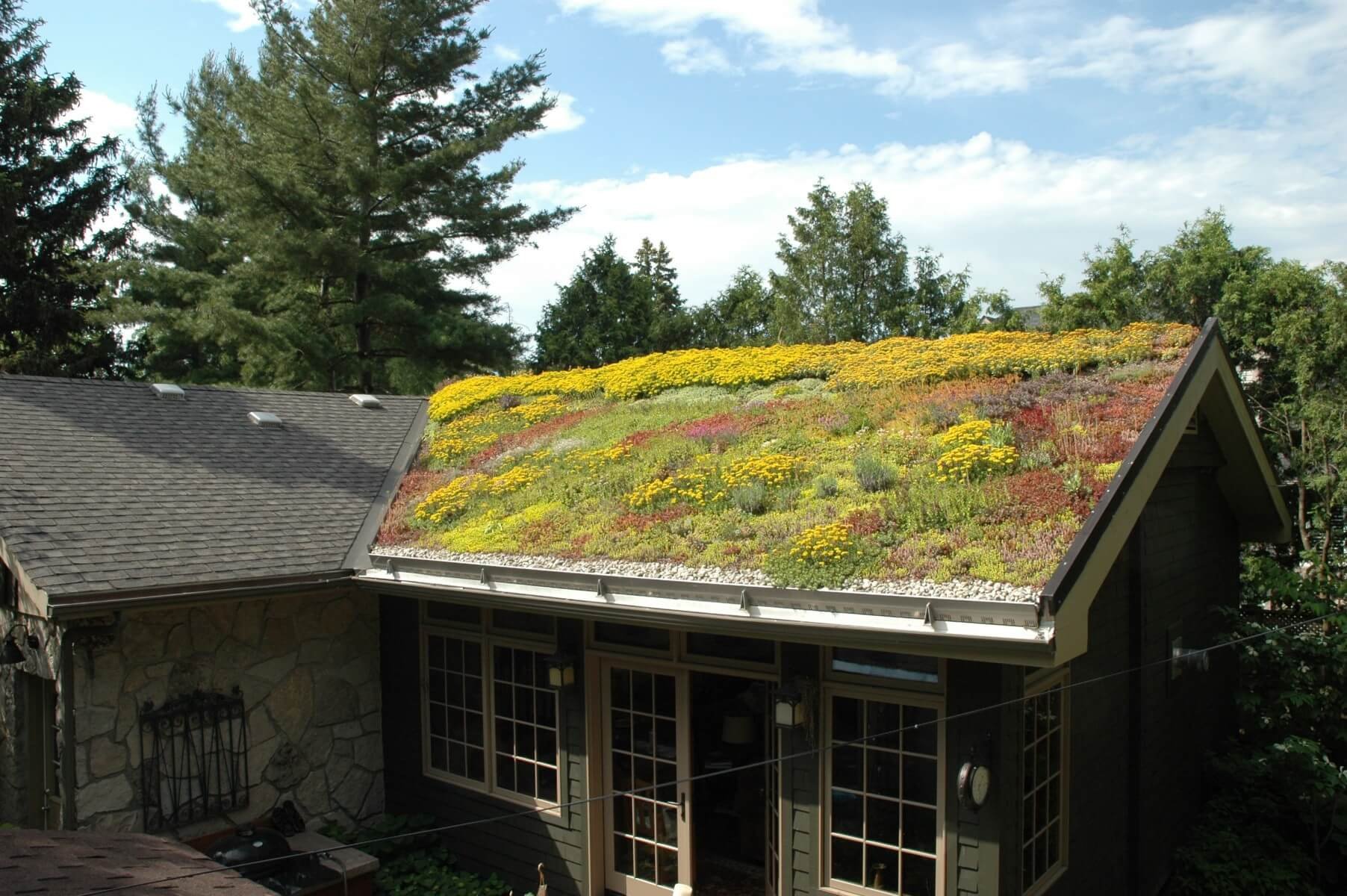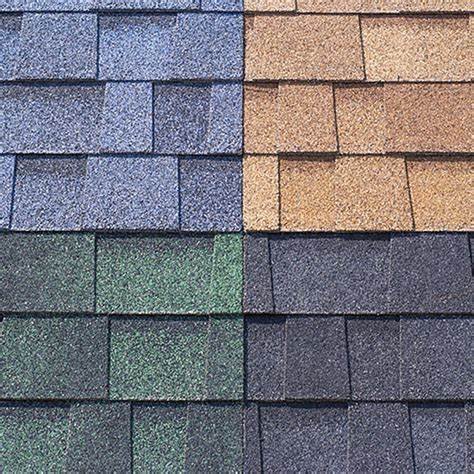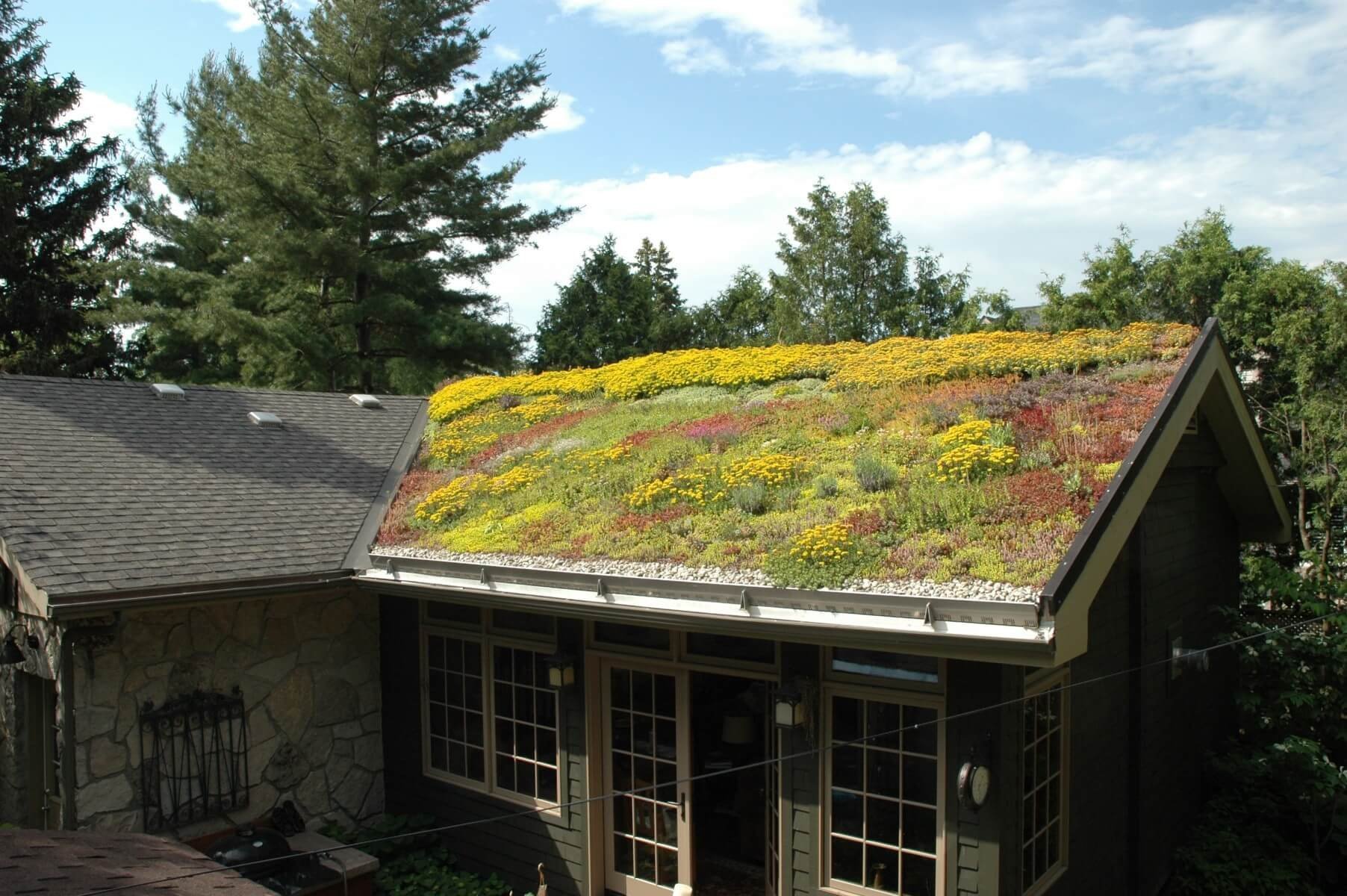Roofing
The roof of a property is not only one of its core aesthetic features, it is also a critical part of the building’s energy envelope. The energy envelope is the boundary between a building’s interior and external environment, impacting its heating, cooling and overall energy consumption. Rooflines comprise some of the largest square footage of a property’s building envelope.
Roofs provide several benefits to the property’s energy usage. These include:
Insulation and Thermal Performance
One of the primary functions of a roof is to provide insulation, preventing heat transfer between the interior and exterior of a building. Proper insulation helps maintain a comfortable indoor temperature, reducing the property’s reliance on HVAC. The roofing material chosen can have a significant impact on the roof’s insulative properties and the home's overall energy usage.
2. Solar Reflectance and Absorptance
The color and reflectivity of a roof's surface affect its solar reflectance and absorption properties. Light-colored or reflective roofs, commonly known as “cool roofs,” can reflect a significant portion of solar radiation, reducing heat absorption and keeping the building cooler. Clay, spanish tile, metal, and asphalt shingle tile can all be good options for cool roofs. Conversely, dark-colored roofs absorb more heat, leading to better heat retention in the winter. Slate shingles, metal, solar and asphalt shingles can all be good options for darker roof choices.
3. Ventilation and Airflow
Proper ventilation in the roof assembly is crucial for maintaining indoor air quality and regulating temperature. Adequate airflow helps prevent moisture buildup, which can lead to mold growth and structural damage. Strategies such as ridge vents, soffit vents or attic fans all help to facilitate airflow, improve comfort and energy efficiency without the need for HVAC systems.
Many historic properties were built with energy-efficient features innately designed into it’s architecture. Roofing features such as wide overhangs, ventilators, clerestories, skylights, awnings and large shade trees all help to lower the cooling load on the property. Many of the materials that were widely used for historic properties, including metal, slate, clay, and wood, are among some of the longest-lasting and most energy-efficient materials still today.
Potential Restrictions to Roofing Changes
The roof of a property is an integral part of the structure’s architecture and aesthetic. There are potentially requirements or limitations on the roofing material or changes that can be made to the original structures aesthetic if the property has any official historic designation. Please refer to the below link for more information:
National Park Service Secretary of the Interior’s Standards for the Treatment of Historic Properties
Roofing materials
Slate
Natural stone that is highly durable, fire-resistant, and low maintenance. It comes in various colors and can be shaped into thin, flat tiles.
-
Lifespan: 75-150+ years
Cost: $22-$50 / sq.ft
Sustainability: Slate roofs are some of the longest lasting roofing materials available. Their dark color is better suited for holding in what and can help keep homes warm in the winter.
Cons: Slate roofing tiles are one of the priciest roofing options. Their heavy weight also requires additional structural elements to be in place to hold the weight of the roof.
Wood Shingles
Wood shingles are lightweight, renewable and offer good insulation. They can be made from various types of wood, including cedar, pine and redwood.
-
Lifespan: 20-25 years
Cost: $6.50 - $10 / sq.ft
Sustainability: Naturally “cool colored” materials making them good options for cool roofs. They are naturally occurring and biodegradable.
Cons: Wood shingles can be complicated to install due to their natural individuality. They have low durability, can be high maintenance depending on weather and are a fire hazard.
Metal Roofing
Metal roofs are durable, lightweight, and fire resistant. They come in various materials, including copper, steel and aluminum, offering longevity and versatility.
-
Lifespan: 30-50+ years
Cost: $8 - $27 / sq.ft
Sustainability: Metal roofs can be colored to meet the needs of the property. They can be reflective, or light colored to achieve the benefits of a “cool roof” or be dark colored to increase heat during the winter.
Cons: Metal roofs have a high initial cost. There is also some maintenance that may be involved due to paint fading over time.
Clay Tile
Clay tiles are made from natural materials making an attractive, ecofriendly and long-lasting roof. They are low maintenance, fire resistant and can come in a variety of custom colors.
-
Lifespan: 50-100 years
Cost: $9 - $15 / sq.ft
Sustainability: Naturally light colored, clay tiles make a good option for cool roofs. Clay is a natural insulator, making it a great option for improving energy efficiency.
Cons: Like slate, clay tiles are extremely heavy and will require additional structural members to hold the roof. They are on the expensive end of the spectrum and can be prone to breaking.
Asphalt Shingles
Asphalt shingles are the most common roofing type on today’s homes. They are inexpensive, easy to install, come in a variety of colors and styles, and are easy to repair.
-
Lifespan: 20-50 years
Cost: $4 - $9 / sq.ft
Sustainability: Asphalt shingles can be colored to match the property’s aesthetic. A light-colored shingle would create the benefits of a “cool roof” while a dark colored shingle would increase heat retention.
Cons: Asphalt shingles have a relatively low lifespan compared to those of other roofing materials. They are environmentally unfriendly due to the asphalt they are made with and their short lifespan.
Copper Roofing
Copper tiles are some of the most expensive metal roof types you can buy but also one of the most beautiful. Copper roofs are long lasting, require minimal maintenance, energy efficient and visually stunning.
-
Lifespan: 60-100 years
Cost: $16 - $24 / sq.ft
Sustainability: Copper is a natural metal and installed bare making it minimally manufactured. It requires little maintenance and is one of the longest lasting roofing types.
Cons: Expensive due to the material itself, develop a patina over time which changes the color (can be either a con or a pro) and can be noisy similar to other metal roofing types.
Solar Shingles
Solar shingles are gaining in popularity due to their curb appeal and energy offsets. They generate energy, are ecofriendly and are highly durable.
-
Lifespan: 20-40 years*
Cost: $34 - $43 / sq.ft
Sustainability: Solar shingles are a green energy source and create electricity that can be utilized by the property or sometimes sold back to the power company.
Cons: Solar roofs can be on the higher end of cost depending on the manufacturer. They require trained specialists to install, often require additional electrical equipment to be installed and due to their relative newness on the market, there is little information on their longevity.

Green Roofing
Green roofs have grown in popularity in recent years as a sustainable option. They are environmentally friendly, improve energy efficiency through insulation and can help to reduce noise.
-
Lifespan: 30-50 years
Cost: $10 - $35 / sq.ft
Sustainability: Green roofs are naturally insulating and don’t absorb solar energy like traditional roofing materials. Green roofs also offer unique sustainability benefits like benefiting pollinators.
Cons: Green roofing requires regular maintenance in order to keep it healthy and performing. They are also susceptible to water damage due to the nature of the roof.
Reducing your energy through roofing
Reducing the energy load on your property through your roof can be looked at in a number of ways.
Cool Roofs: Cool roofs are designed to reflect sunlight, thereby absorbing less solar energy. Reducing the amount of solar energy absorbed through your roof decreases the amount of heat that is retained and spread throughout the property. Please watch the video below for more information on cool roofs.
Insulation:Insulating your attic space can drastically improve your roof’s energy efficiency. Insulation adds an additional layer to your building envelope and acts as an additional stopgap between your home and your roof. For more information on insulation, please go to our insulation page.
Green Roofs: Green Roofs often called vegetative or living roofs. They consist of a waterproof membrane to protect the structure of the home, drainage material and vegetative materials. Green roofs require flat or slightly sloped surfaces and won’t fit most historic aesthetics. Green roofs come in two forms, extensive and intensive. Intensive green roofs require regular maintenance and upkeep due to the vegetation grown. Extensive green roofs are most frequently used and require little maintenance other than annual weeding.
For some case studies where green roofs have successfully been combined with historic rehabilitation, please see the references below:
National Bohemian Brewer / Brewers Hill Complex, Baltimore, MD
John W. McCormack U.S. Post Office and Courthouse, Boston, MA
For more detailed information on green roofs, please see the series of articles published by the National Parks Service at NPS Green Roof Articles
Solar Roofs:Solar roofs are quickly becoming the prevailing energy-efficient choice for property owners. For historic properties, this can be a trickier option, as solar roofs can detract from the aesthetic of the property. A newer option that is steadily becoming available lies in solar roofing tiles. These tiles blend in with the natural roof, often resembling slate, commonly used in historic properties. Solar roofing tiles offer an exciting option for historic properties that wish to expand their renewable energy option while preserving the historic aesthetic of the property.
A limited number of solar manufacturers produce solar shingles. Below is a list of companies that produce solar shingles and an overview of their offerings:
💡CertainTeed Solar: This company manufactures monocrystalline solar shingles and tiles. The Apollo Tile II system integrates with flat concrete tile roofs, and the Apollo II system installs on asphalt tile configurations.
💡Luma Solar: Luma’s monocrystalline shingles have a Miami-Dade hurricane rating of Class 5+, which means they’re durable enough to withstand even the most dangerous hurricane-force winds. They work with metal shingles and have upgradable technology.
💡SunTegra Solar: SunTegra shingles and tiles can be customized for composite and tile roofs. Sheets of tiles are attached on composite layouts, while individual tiles are assembled on tiled roofs.
💡Tesla Solar Roof: Tesla is one of the few solar installers that provides full-roof installations. The Tesla Solar Roof uses both glass solar tiles and architectural steel tiles to enhance the roof’s strength. This installation replaces conventional roofing to combine clean energy generation with protection from the elements.
💡Timberline Solar Roofing by GAF Energy: Timberland solar roofing uses rack-mounting, so it doesn’t need to drill into your shingles for proper attachment. These shingles come in four colors to match your roof’s design and withstand winds up to 130 mph.









